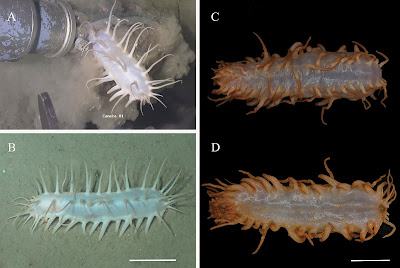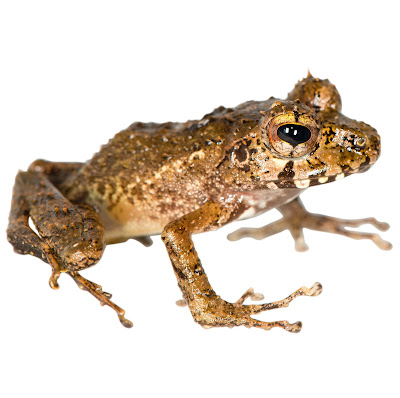Highlights:
• The most comprehensive Stathmopodidae phylogeny to date, focusing on fern-spore-feeding Cuprininae.
• Systematic revision of Cuprininae enhances understanding of insect-fern interactions, diverging from angiosperm-centric studies.
• Despite fern spores being rare niche for Lepidoptera, no significant differences in Speciation/Extinction/State-transition rates between fern-spore feeders and others.
• State-transition rate differs between specialists and oligophages; faster transition from oligophages to specialists observed.
Abstract
Fern-spore-feeding (FSF) is rare and found in only four families of Lepidoptera. Stathmopodidae is the most speciose family that contains FSF species, and its subfamily Cuprininae exclusively specializes on FSF. However, three species of Stathmopodinae also specialize on FSF. To better understand the evolutionary history of FSF and, more generally, the significance of specialization on a peculiar host, a phylogenetic and taxonomic revision for this group is necessary. We reconstructed the most comprehensive molecular phylogeny, including one mitochondrial and four nuclear genes, of Stathmopodidae to date, including 137 samples representing 62 species, with a particular focus on the FSF subfamily, Cuprininae, including 33 species (41% of named species) from 6 of the 7 Cuprininae genera. Species from two other subfamilies, Stathmopodinae and Atkinsoniinae, were also included. We found that FSF evolved only once in Stathmopodidae and that the previous hypothesis of multiple origins of FSF was misled by inadequate taxonomy. Moreover, we showed that (1) speciation/extinction rates do not differ significantly between FSF and non-FSF groups and that (2) oligophage is the ancestral character state in Cuprininae. We further revealed that a faster rate of accumulating specialists over time, and thus a higher number of specialists, was achieved by a higher transition rate from oligophagages to specialists compared to the transition rate in the opposite direction. We finish by describing three new genera, Trigonoda gen. nov., Petala gen. nov., and Pediformis gen. nov., and revalidating five genera: Cuprina, Calicotis, Thylacosceles, Actinoscelis, Thylacosceloides in Cuprininae, and we provide an updated taxonomic key to genera and a revised global checklist of Cuprininae.
Keywords: Ancestral state reconstruction, Fern-spore-feeding (FSF), Gelechioidea, Phylogeny, New Genus, New Species
 |
| The phylogeny of Cuprininae. Phylogenetic result based on Bayesian inference analysis. Coloured bars after taxa names correspond to genus delimitation based on morphological and phylogenetic results. |
...
Based on morphological data congruent with the molecular results, we propose to divide the Cuprininae into eight genera: Cuprina, Calicotis, Thylacosceles, Actinoscelis, Thylacosceloides, Trigonoda gen. nov., Petala gen. nov. and Pediformis gen. nov. ...
...
Nine new species are named and described below, including: Calicotis bipunctella sp. nov., Ca. zhanglini sp. nov., Ca. obsoleta sp. nov., Ca. candida sp. nov., Cuprina inferna sp. nov., Thylacosceloides sanctigemma sp. nov., Thylacosceloides chihweii sp. nov., Petala shida sp. nov.. and Pedifomis fushana sp. nov..
Cuprininae Sinev, 2015.
Distribution: Eastern Palearctic, Oriental, Oceanian, Australasian, and Afrotropical; 8 genera and 81 species.
Cuprina Sinev, 1988
Cuprina inferna Shen & Hsu, sp. nov.
Etymology: An adjective of Latin origin, from infernus = of the underground, infernal, referring to the dark appearance reminiscent of clothing worn at a funeral.
Calicotis Meyrick, 1889
Calicotis bipunctella Shen & Hsu, sp. nov.
Etymology: A noun of Latin origin, from the prefix bi- = two, double, plus punctum = dot, referring to the two small, brown markings on the forewing upperside.
Calicotis zhanglini Shen, Terada & Hsu, sp. nov.
Etymology: The species is dedicated to our collaborator Mr. Zhang-Lin Chen, who helped us collect this species in Taiwan.
Calicotis obsoleta Shen & Hsu, sp. nov.
Etymology: An adjective of Latin origin, from obsoletus = worn out, referring to the nearly invisible markings on the forewing upperside.
Calicotis candida Shen & Hsu, sp. nov.
Etymology: An adjective of Latin origin, from candidus = shining, white, referring the overall silvery white appearance of the moth.
Thylacosceles Meyrick, 1889
Actinoscelis Meyrick, 1912
Thylacosceloides Sinev, 1988
Thylacosceloides sanctigemma Shen & Hsu, sp. nov.
Etymology: A noun in apposition, derived from the Latin adjective sanctus = holy, plus the Latin noun gemma = jewel, precious stone.
Thylacosceloides chihweii Shen & Hsu, sp. nov.
Etymology: This species is dedicated to our cooperator Mr. Chih-Wei Huang, who helped us to collect this species in Taiwan.
Trigonoda Shen, Terada & Hsu gen. nov.
Etymology: The generic epithet “Trigonoda” derives from the Greek trigonos = triangular, and refers to the triangular-shaped cucullus, which serves as an important diagnostic character for this genus. The ending -da is copied from the related genera Stathmopoda and Pachyrhabda (the latter now synonymised).
Petala Shen, Terada & Hsu gen. nov.
Etymology: The generic name is from the Greek petalon = leaf, though the stem has later come to be used to mean ‘petal’, in allusion to the costa which is tapered toward the base making the valva petal-like.
Petala shida Shen & Hsu, sp. nov.
Etymology: The specific epithet “shida” is the Mandarin abbreviation for the National Taiwan Normal University, referring to the place where we collected the type material for this species. It is a noun in apposition.
Pediformis Shen & Hsu gen. nov.
Etymology: The generic name originates from the Latin, and refers to the foot-shaped cucullus which is an important diagnostic character for this genus. Though pediformis in Latin is an adjective, it is to be treated as a feminine noun when used as a genus name.
Pediformis fushana Shen & Hsu, sp. nov.
Etymology: The specific epithet, an adjective, refers to the place where we collected the type material for this species.
Zong-Yu Shen, Takeshi Terada, Jean-François Landry, Robert J.B. Hoare, Li-Yaung Kuo, Ming-Hsun Chou, Yu-Feng Hsu and Jen-Pan Huang. 2024. Systematics and Evolutionary Dynamics of Insect-Fern Interactions in the specialized Fern-Spore Feeding Cuprininae (Lepidoptera, Stathmopodidae). Molecular Phylogenetics and Evolution. 194, 108040. DOI: 10.1016/j.ympev.2024.108040








































